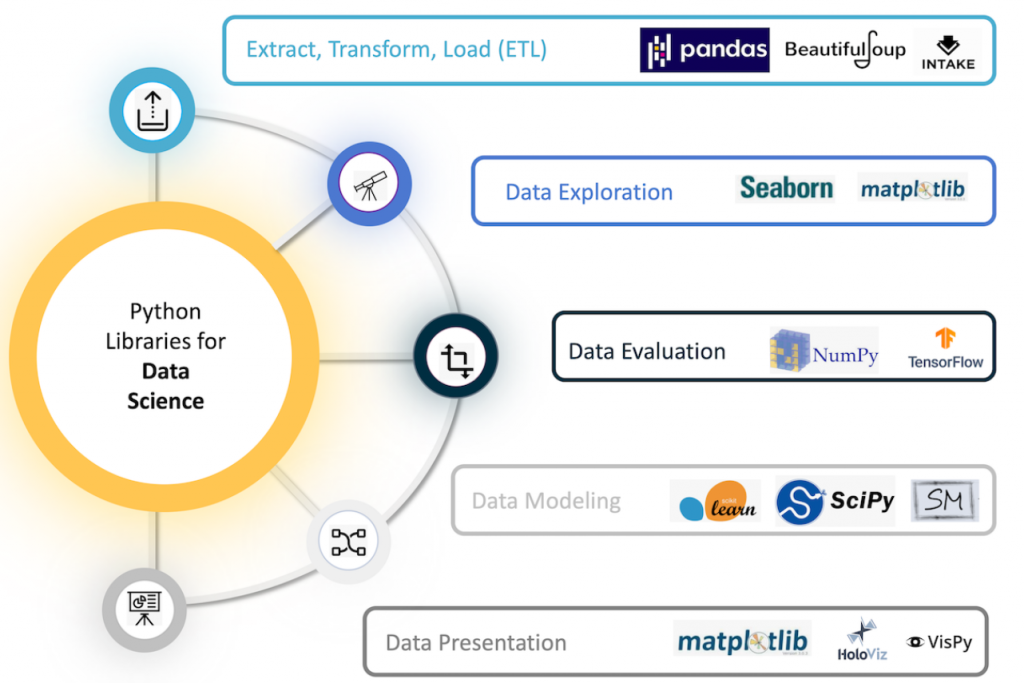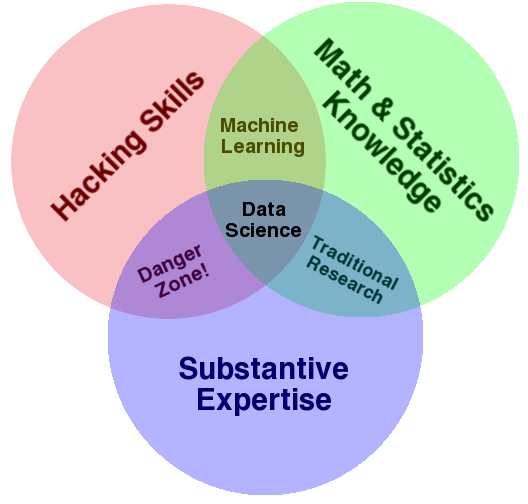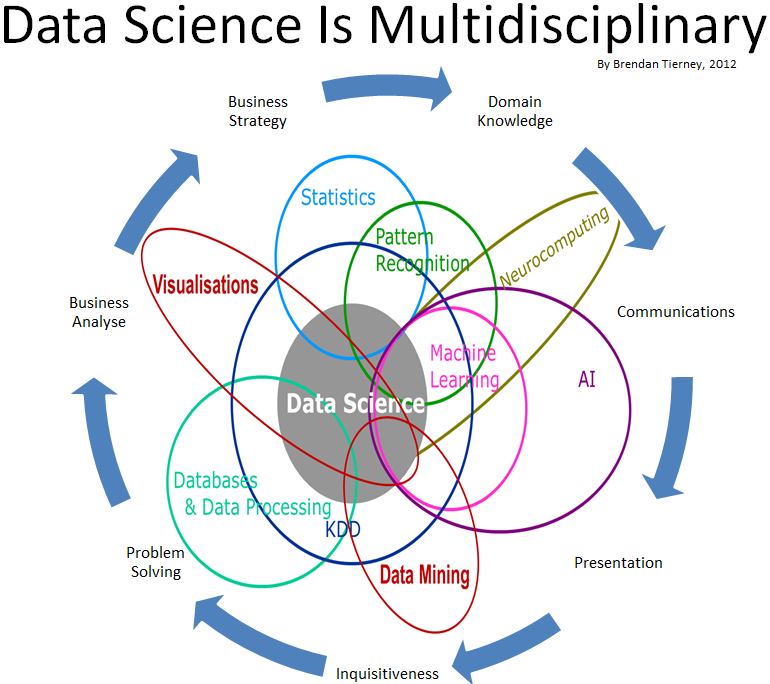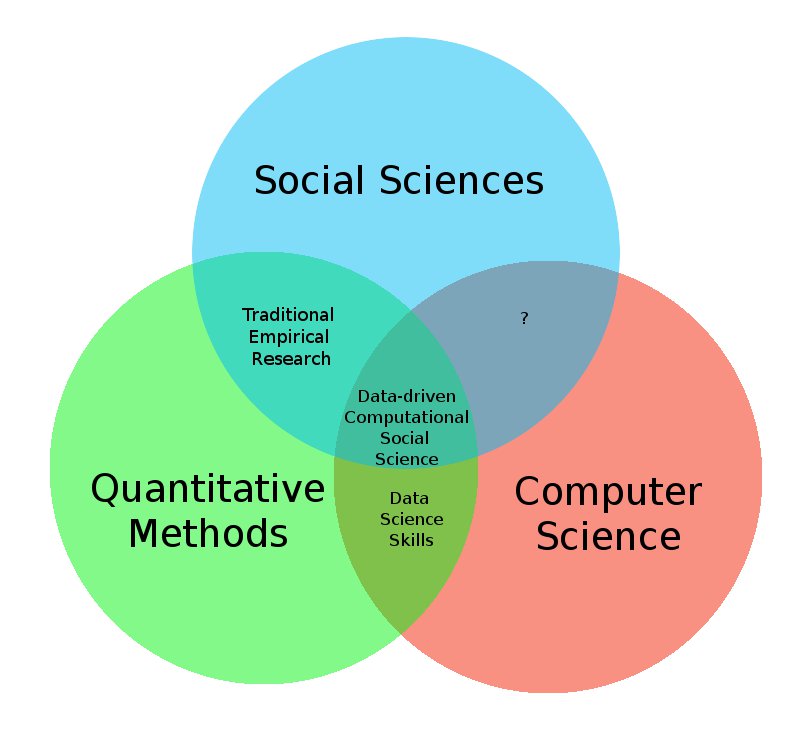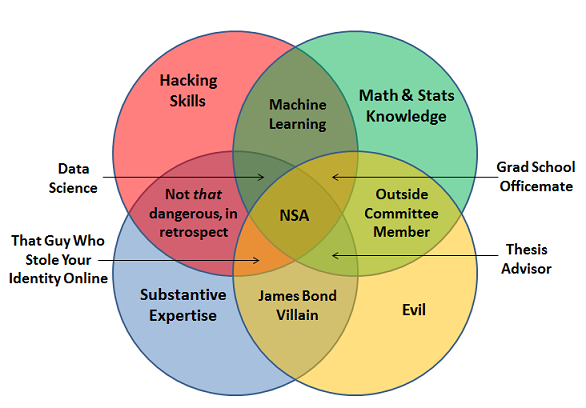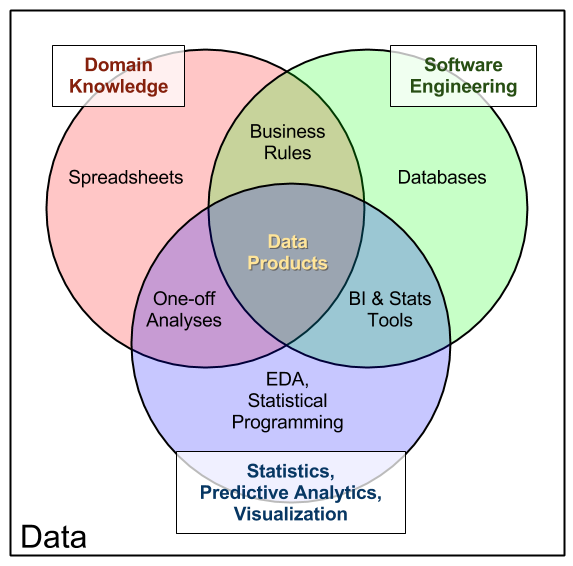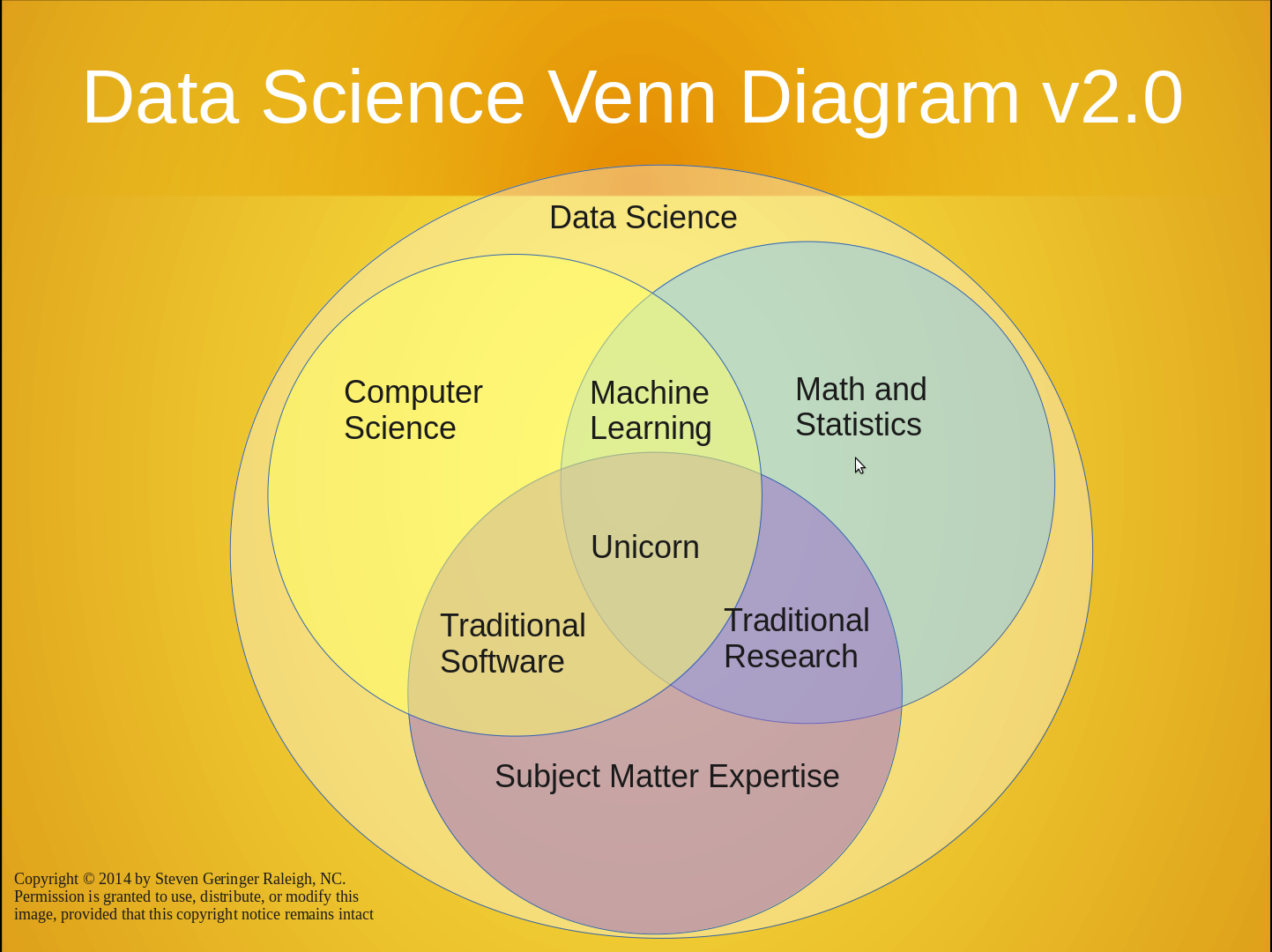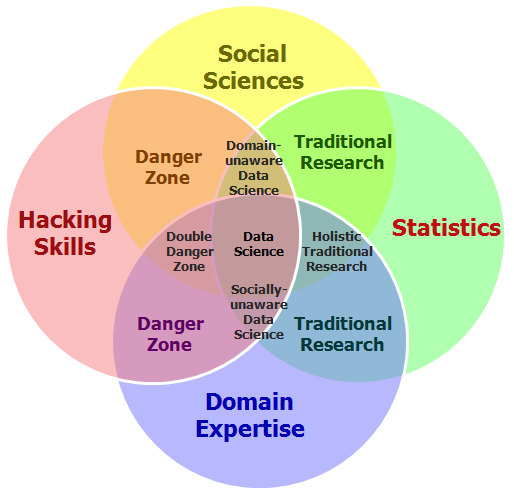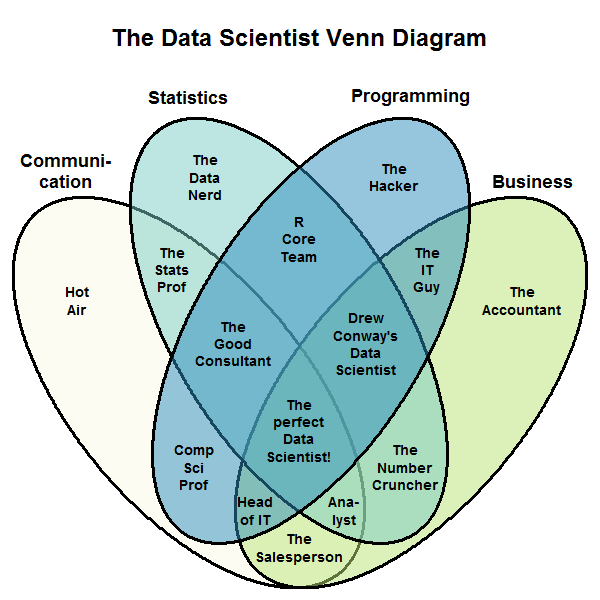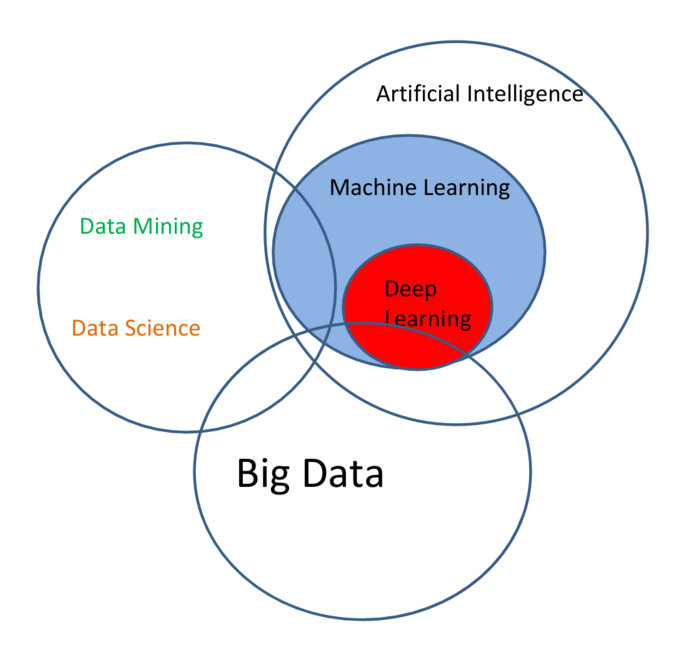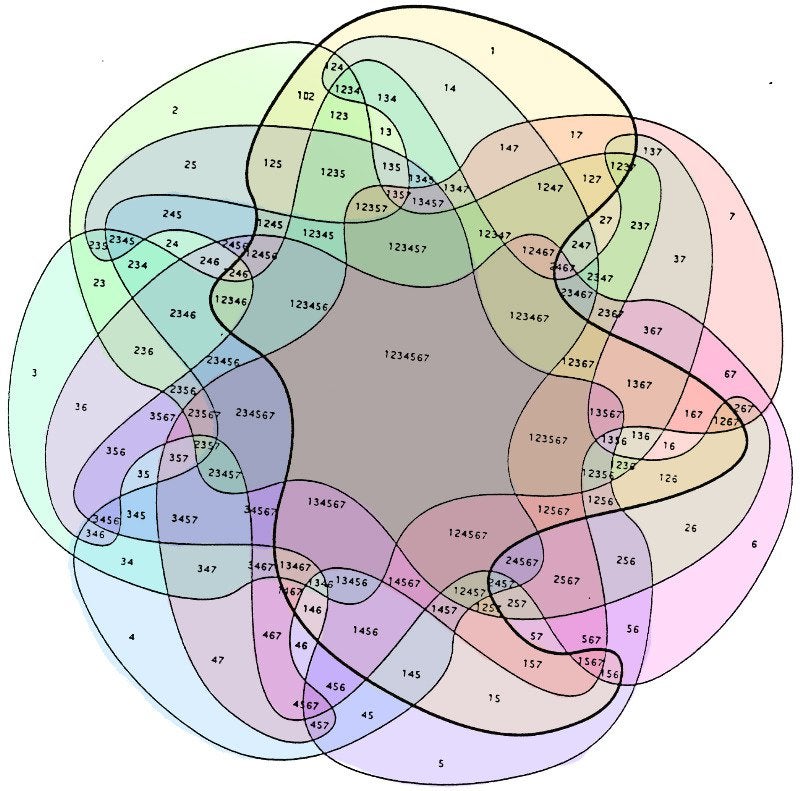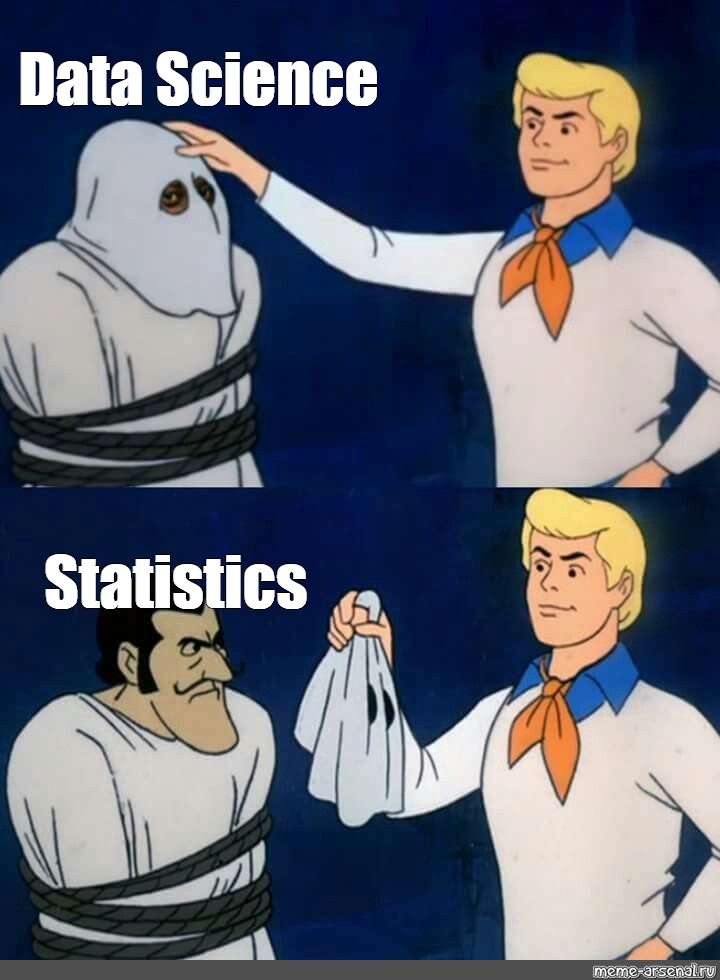
Data Science Overview 📖
MATH/COSC 3570 Introduction to Data Science
Dr. Cheng-Han Yu
Department of Mathematical and Statistical Sciences
Marquette University
Department of Mathematical and Statistical Sciences
Marquette University
What is Data Science or a Data Scientist?
A Little History of Data Science
- In 1985, Dr. Jeff Wu used the term Data Science for the first time as an alternative name for Statistics.
- In 1997, Dr. Wu calls for statistics to be renamed data science and statisticians to be renamed data scientists.
- In 2001, Dr. William S. Cleveland advocated an expansion of statistics beyond theory into six technical areas, and the altered expanded field will be called data science.
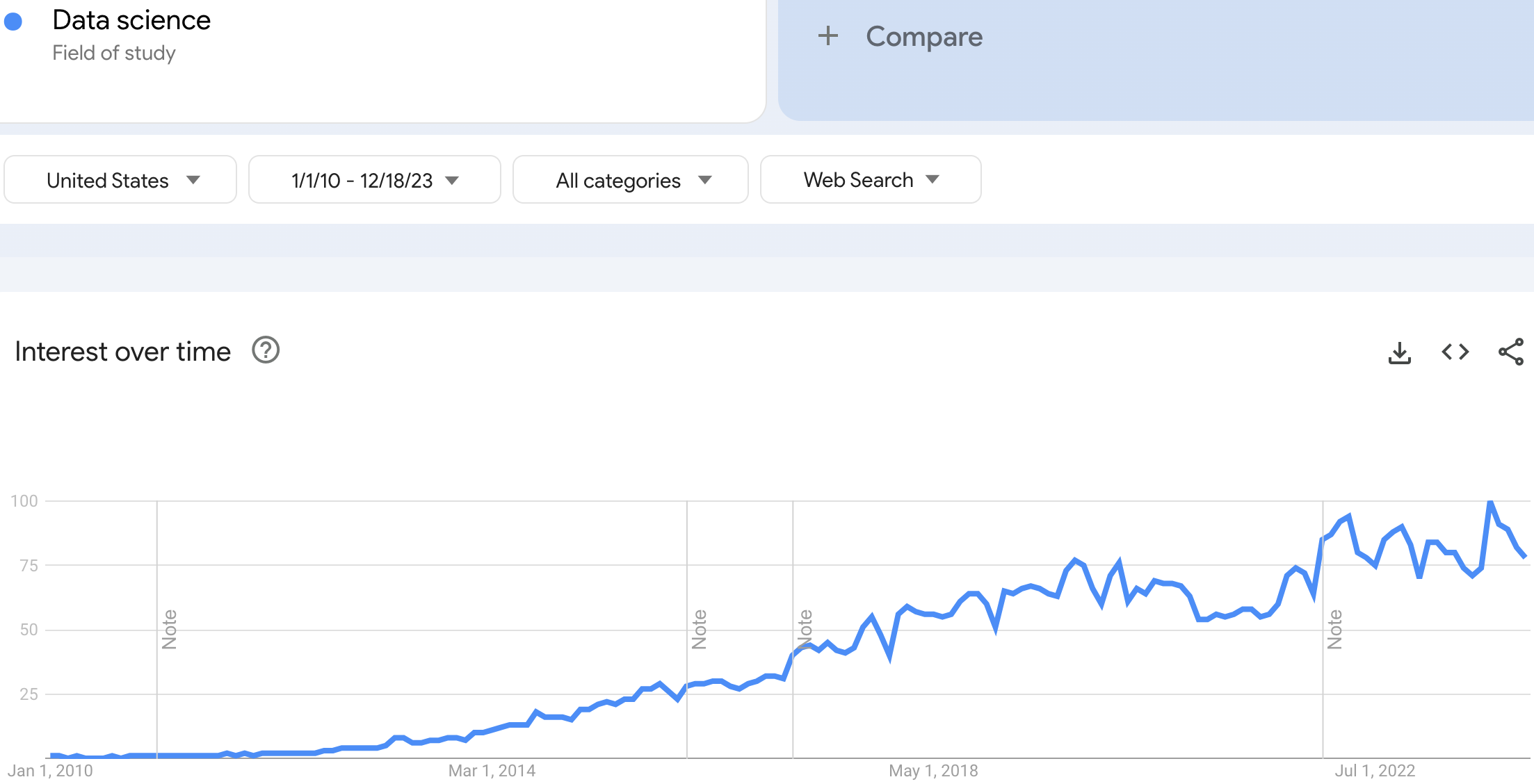
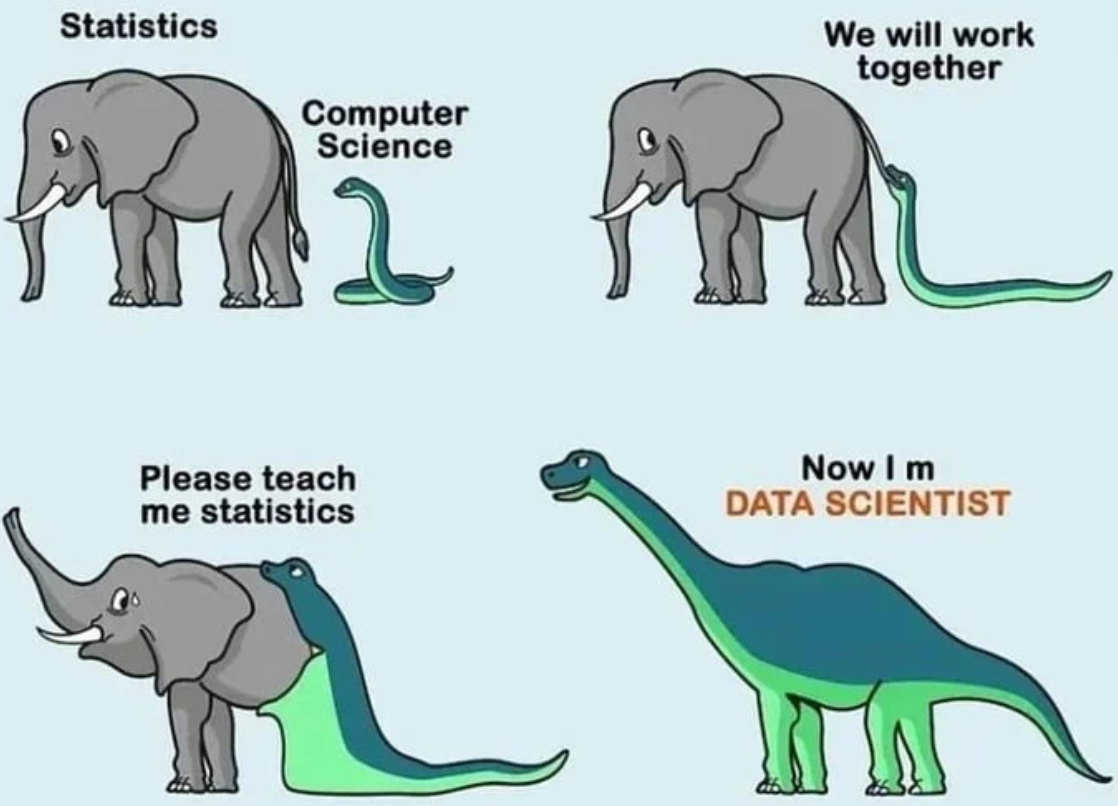
😕 Still what on earth is data science?
Battle of the Data Science Venn Diagrams
Battle of the Data Science Venn Diagrams
Battle of the Data Science Venn Diagrams
Battle of the Data Science Venn Diagrams
Battle of the Data Science Venn Diagrams
Shall We Continue?
- You probably get the idea. There are so many ways to define data science.
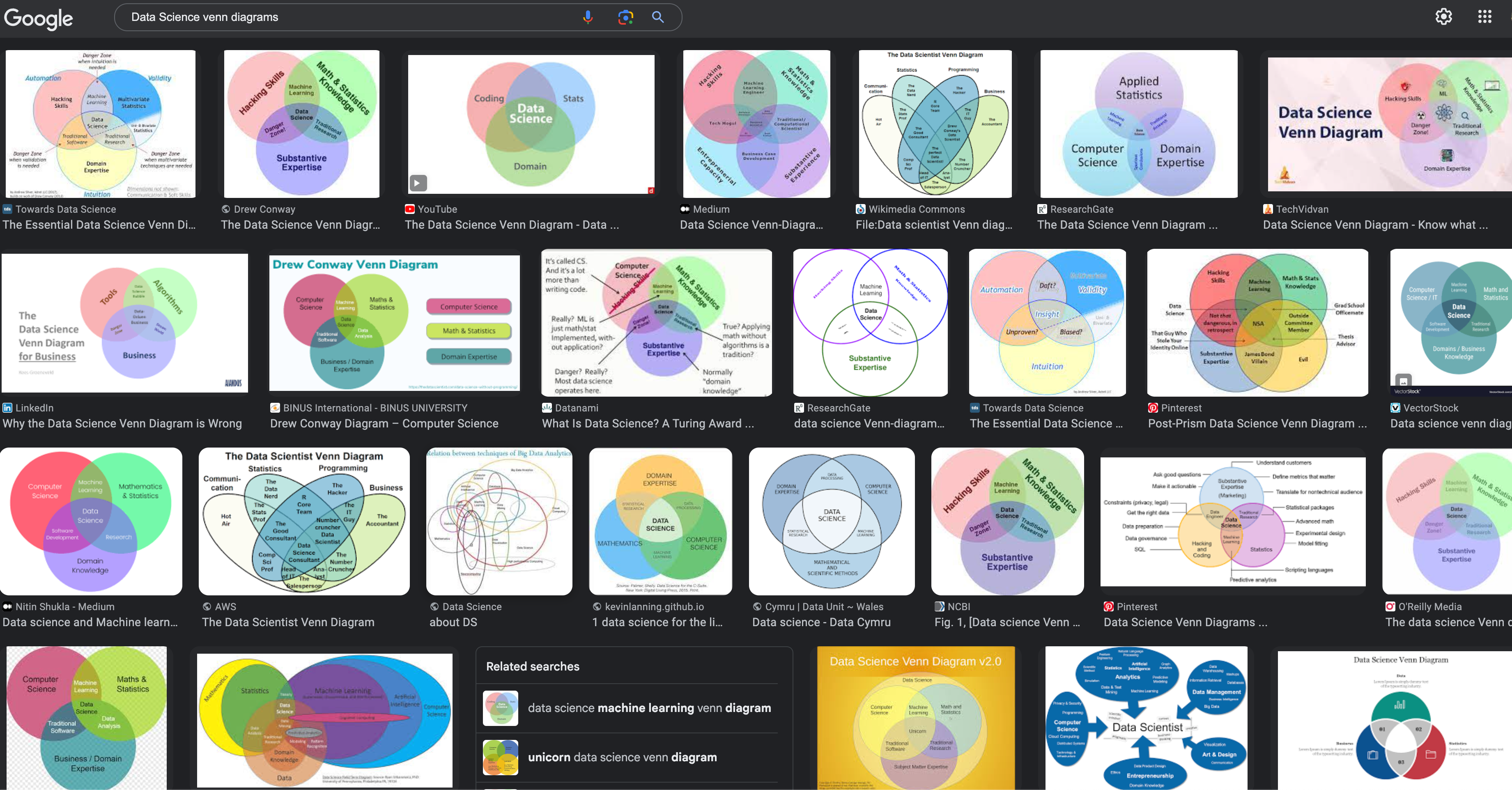
Nobody Knows What Data Science (Scientist) is



- 💰 💰 Dr. Grant (Statistics Education Research Journal, 2017): Data science is the field of people who decide to print “Data Scientist” on their business cards to get a salary bump! 💵 💵
What Wiki Defines
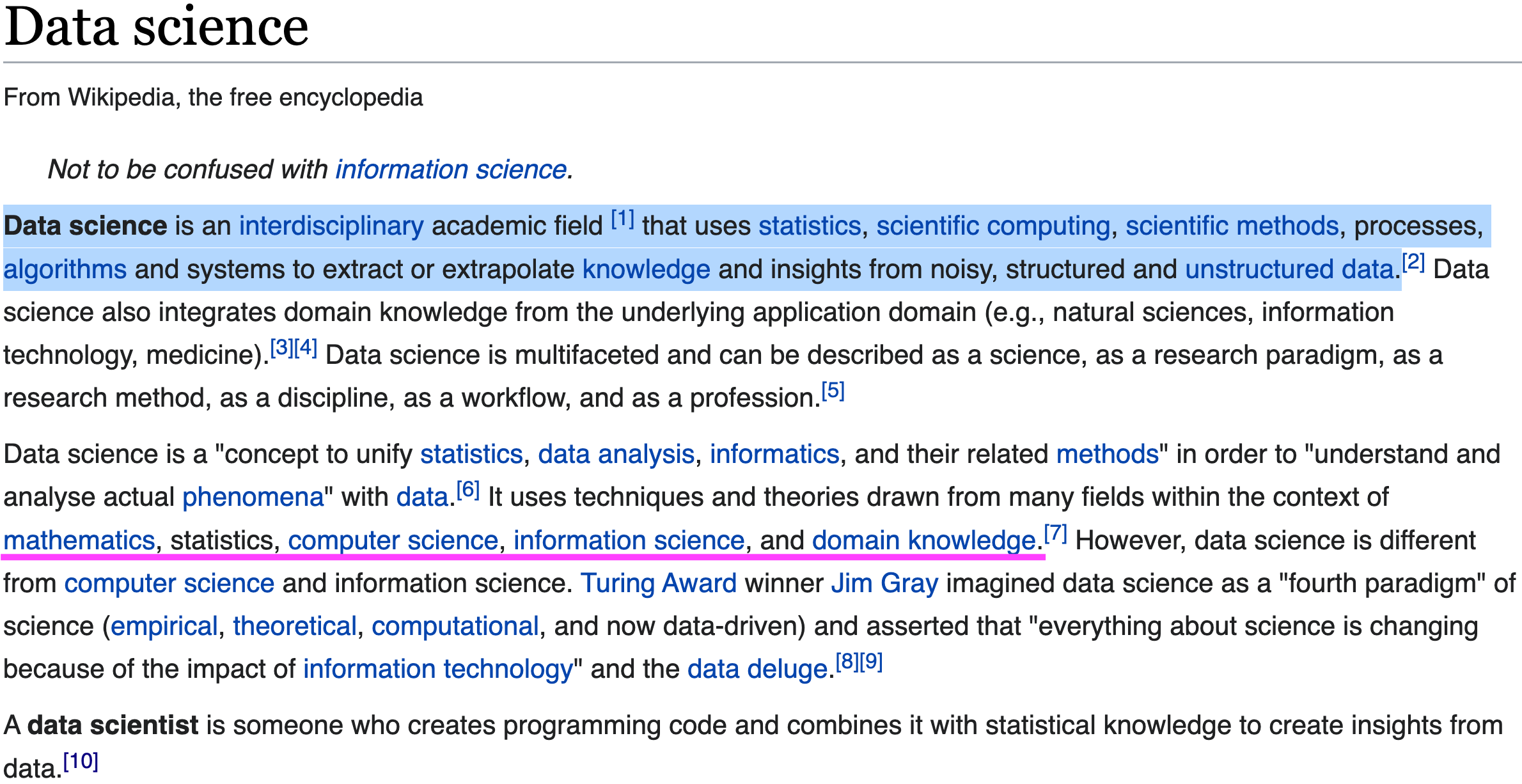
Data Science in This Course
Data science is an discipline that allows us to turn raw data into understanding, insight, and knowledge.
We’re going to learn to do this in a tidy way – more on that later!
This is a introductory data science course with an emphasis on important tools in R/Python that help us do data science.
A Data Science Project
Data Science Workflow
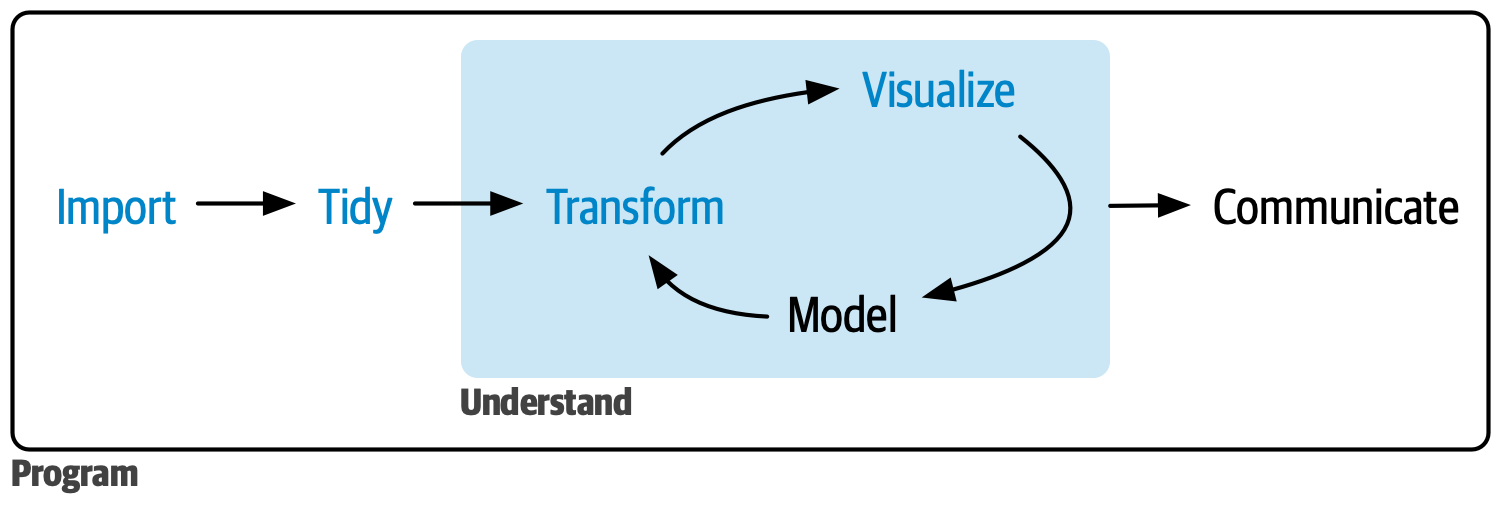

- Import: Take data stored somewhere and load it into your workspace.
- Tidy: Storing data in a consistent rectangular form, i.e., a data matrix.
- Transform: Narrowing in on observations of interest, creating new variables, calculating statistics.
Data Matrix
- Each row corresponds to a unique case or observational unit.
- Each column represents a characteristic or variable.
- This structure allows new cases to be added as rows or new variables as new columns.
# A tibble: 234 × 11
manufacturer model displ year cyl trans drv cty hwy fl class
<chr> <chr> <dbl> <int> <int> <chr> <chr> <int> <int> <chr> <chr>
1 audi a4 1.8 1999 4 auto… f 18 29 p comp…
2 audi a4 1.8 1999 4 manu… f 21 29 p comp…
3 audi a4 2 2008 4 manu… f 20 31 p comp…
4 audi a4 2 2008 4 auto… f 21 30 p comp…
5 audi a4 2.8 1999 6 auto… f 16 26 p comp…
6 audi a4 2.8 1999 6 manu… f 18 26 p comp…
7 audi a4 3.1 2008 6 auto… f 18 27 p comp…
8 audi a4 quattro 1.8 1999 4 manu… 4 18 26 p comp…
9 audi a4 quattro 1.8 1999 4 auto… 4 16 25 p comp…
10 audi a4 quattro 2 2008 4 manu… 4 20 28 p comp…
# ℹ 224 more rows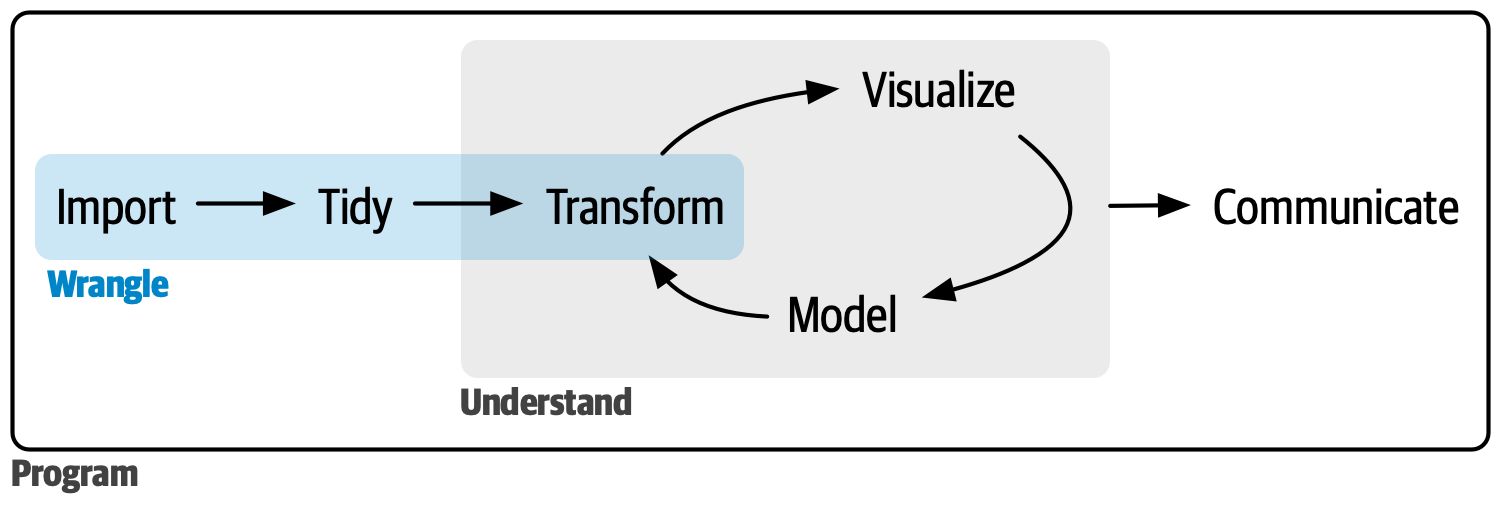
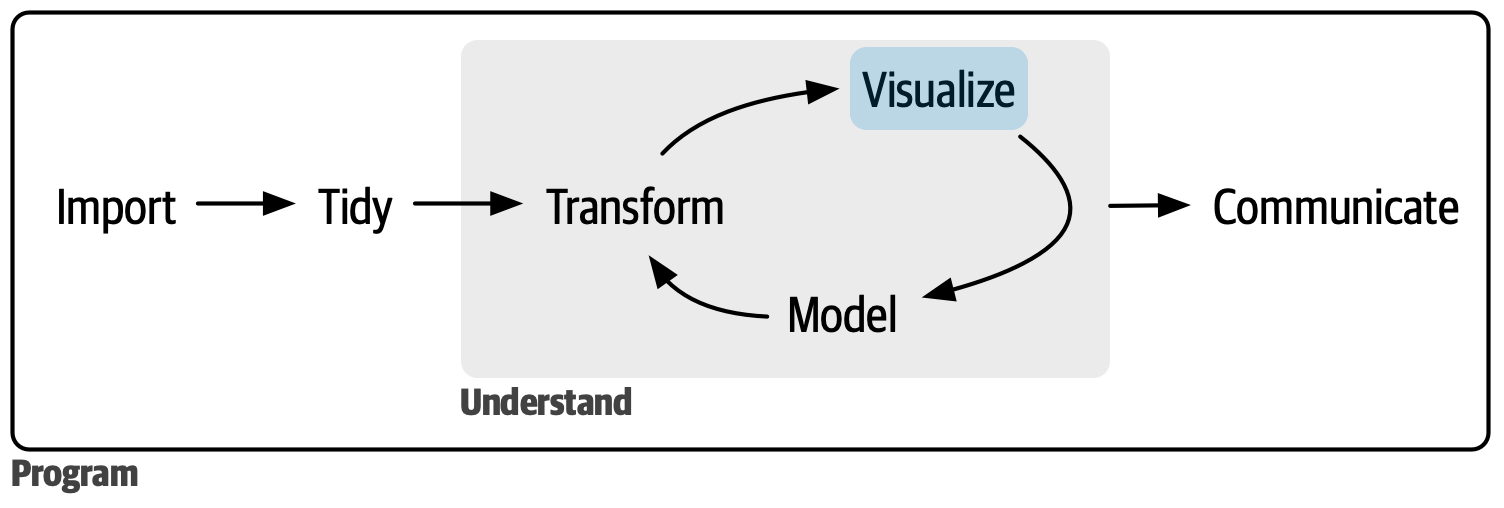
- Visualisation: A good visualisation shows you things that you did not expect or raise new questions about the data.


- Model: Models are complementary tools to visualisation. Once you have made your questions sufficiently precise, you can use a model to answer them.
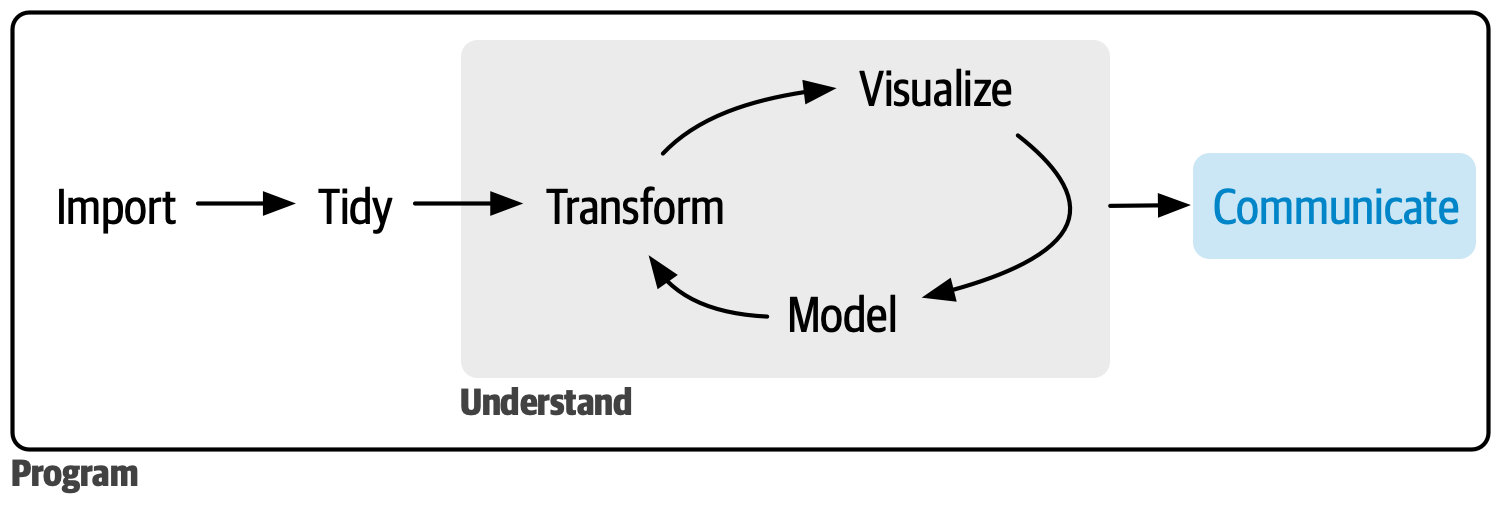
- Communication: It doesn’t matter how well your models and visualization have led you to understand the data unless you can also communicate your results to others.

- Programming: Surrounding all these tools is programming.
R for Data Science
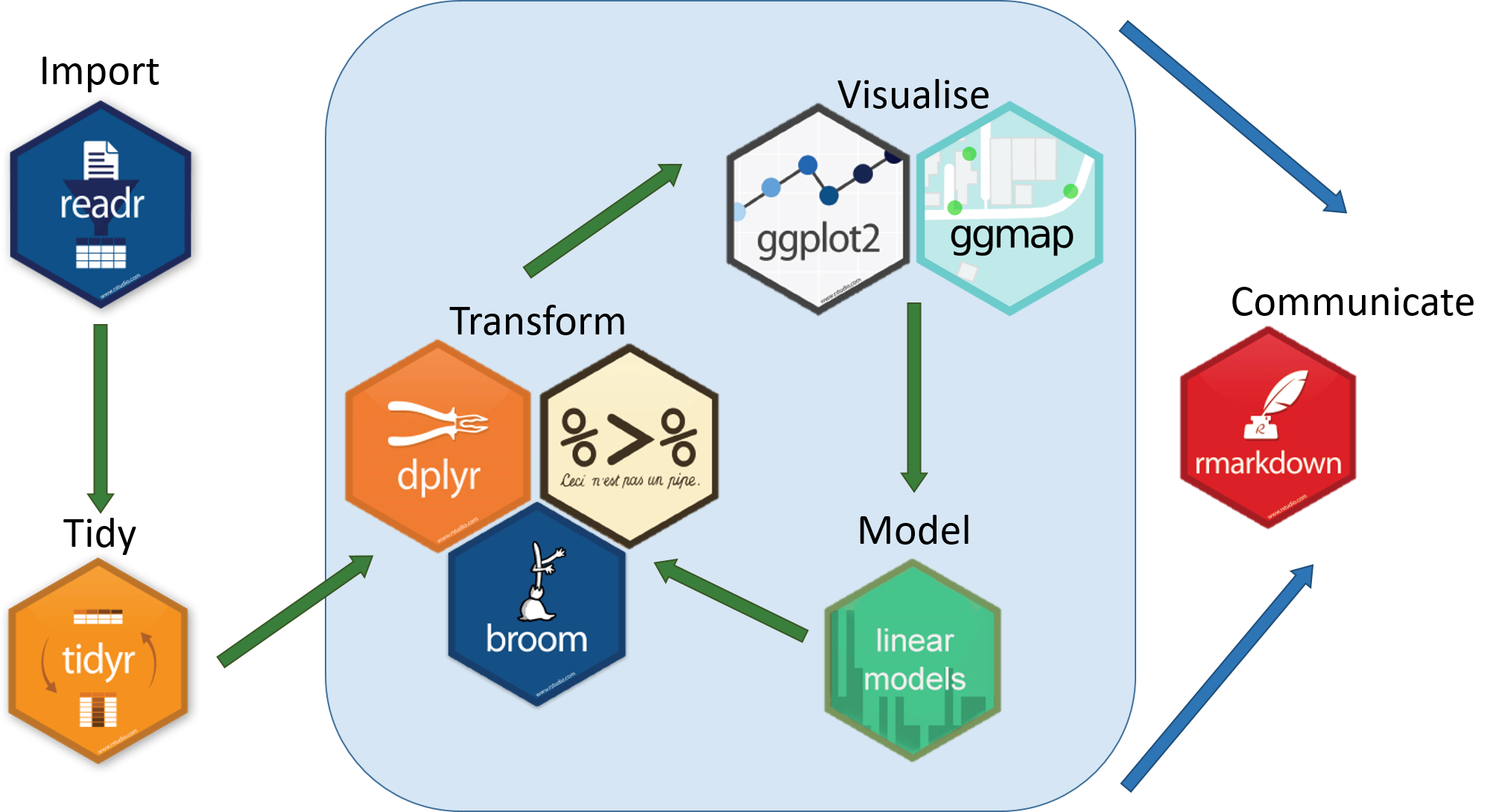
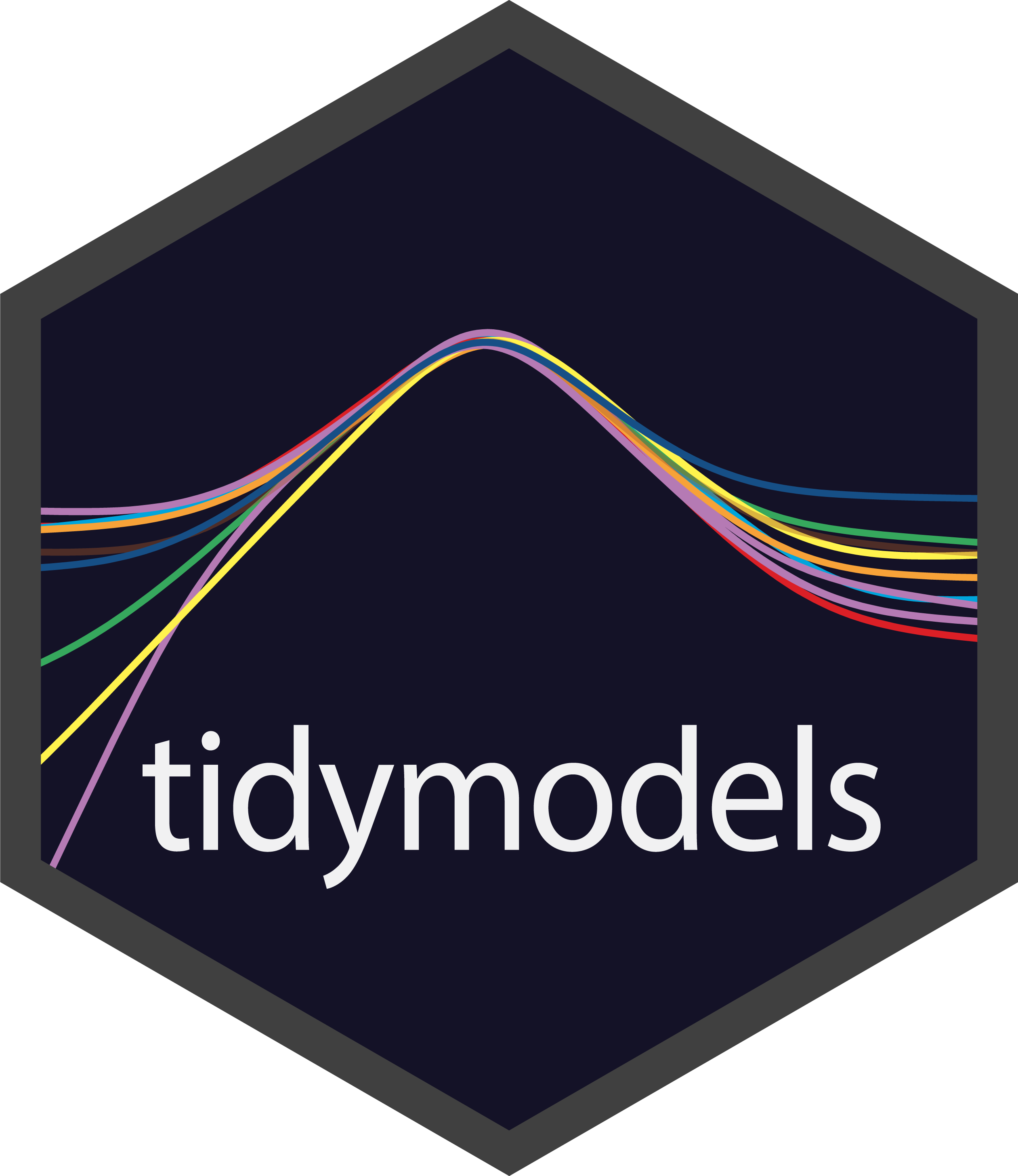

Python for Data Science
